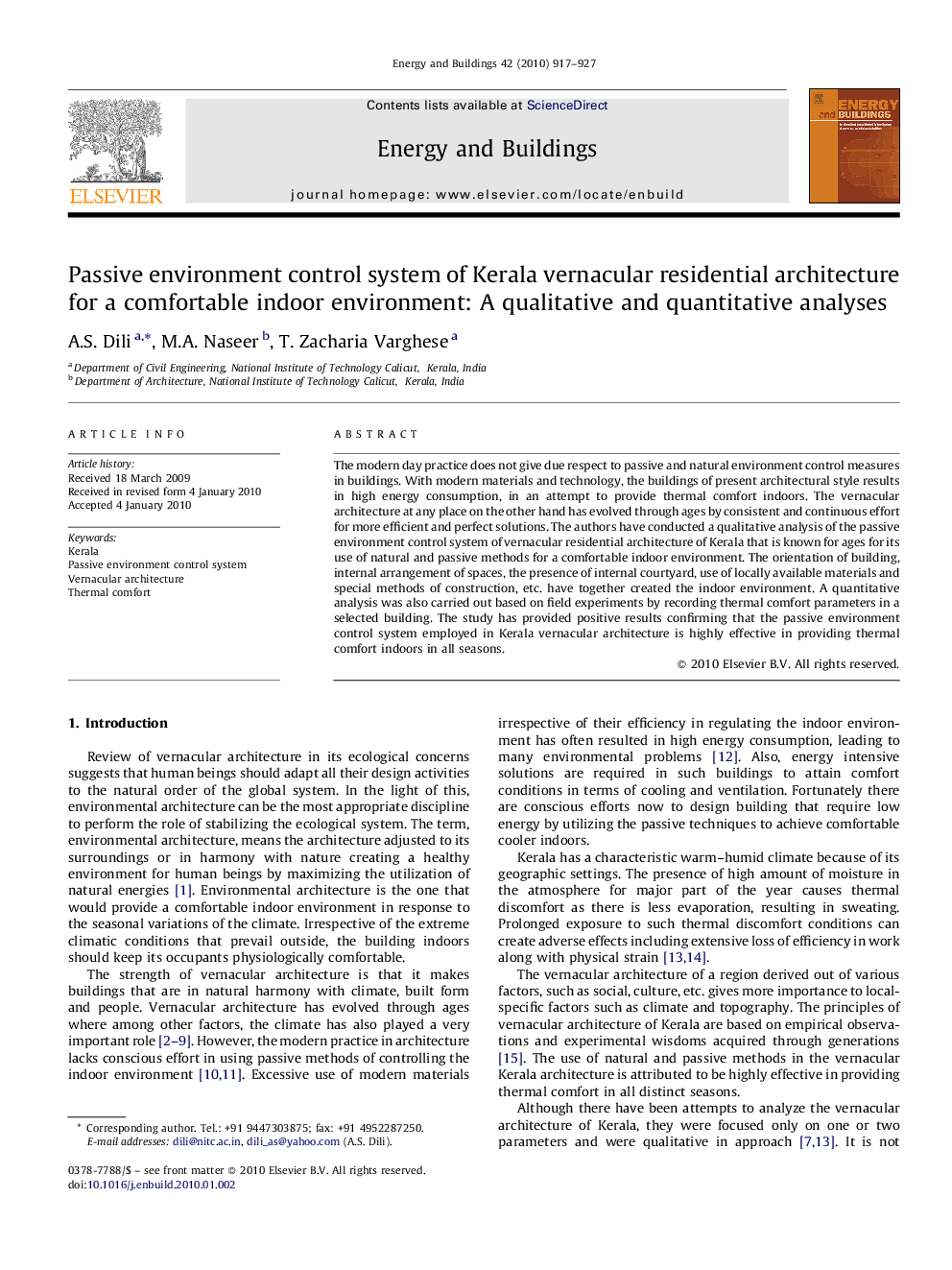| Article ID | Journal | Published Year | Pages | File Type |
|---|---|---|---|---|
| 264282 | Energy and Buildings | 2010 | 11 Pages |
The modern day practice does not give due respect to passive and natural environment control measures in buildings. With modern materials and technology, the buildings of present architectural style results in high energy consumption, in an attempt to provide thermal comfort indoors. The vernacular architecture at any place on the other hand has evolved through ages by consistent and continuous effort for more efficient and perfect solutions. The authors have conducted a qualitative analysis of the passive environment control system of vernacular residential architecture of Kerala that is known for ages for its use of natural and passive methods for a comfortable indoor environment. The orientation of building, internal arrangement of spaces, the presence of internal courtyard, use of locally available materials and special methods of construction, etc. have together created the indoor environment. A quantitative analysis was also carried out based on field experiments by recording thermal comfort parameters in a selected building. The study has provided positive results confirming that the passive environment control system employed in Kerala vernacular architecture is highly effective in providing thermal comfort indoors in all seasons.
